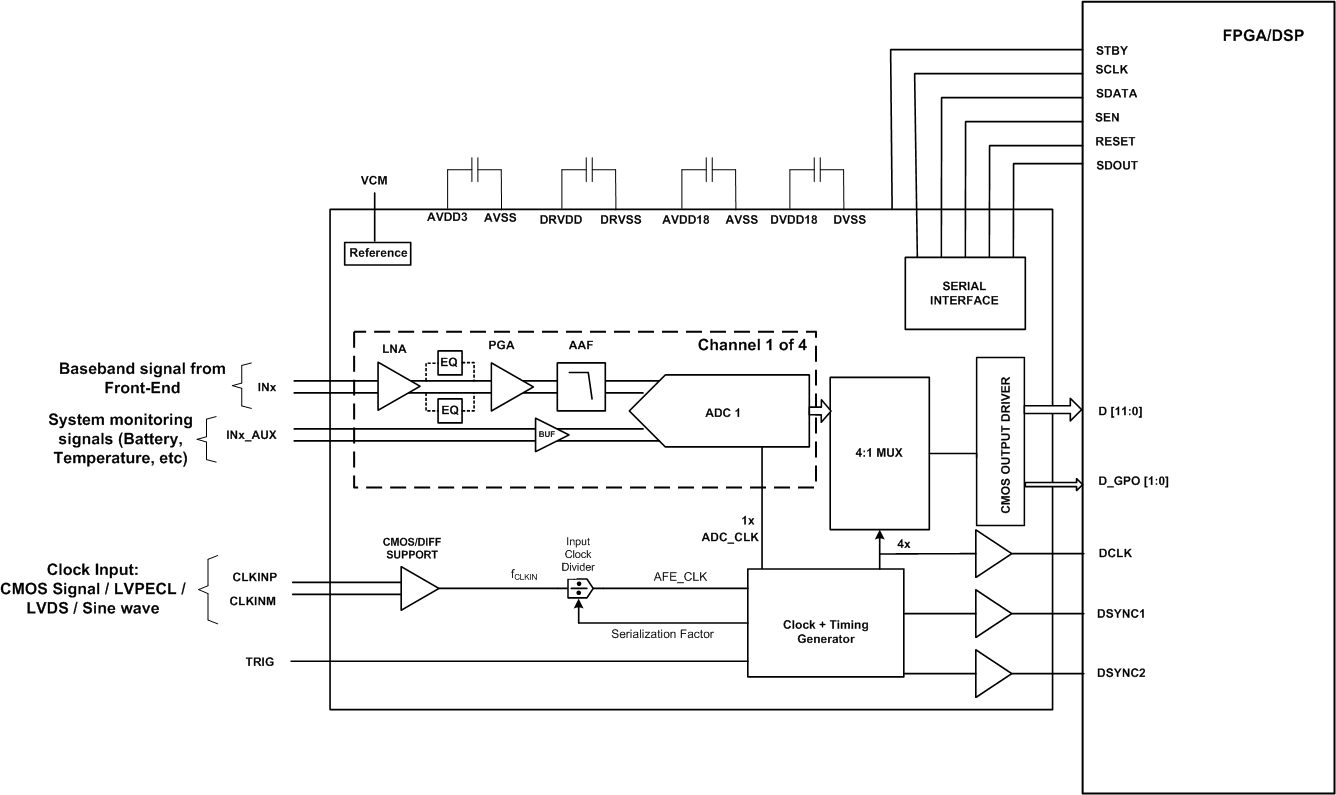SBASB81 December 2024 AFE5401-EP
PRODUCTION DATA
- 1
- 1 Features
- 2 Applications
- 3 Description
- 4 Pin Configuration and Functions
-
5 Specifications
- 5.1 Absolute Maximum Ratings
- 5.2 ESD Ratings
- 5.3 Recommended Operating Conditions
- 5.4 Thermal Information
- 5.5 Electrical Characteristics
- 5.6 Digital Characteristics
- 5.7 Timing Requirements: Output Interface
- 5.8 Timing Requirements: RESET
- 5.9 Timing Requirements: Serial Interface Operation
- 5.10 Typical Characteristics
- 6 Parameter Measurement Information
-
7 Detailed Description
- 7.1 Overview
- 7.2 Functional Block Diagram
- 7.3 Feature Description
- 7.4 Device Functional Modes
- 7.5 Programming
- 7.6 Register Maps
- 8 Application and Implementation
- 9 Revision History
- 10Device and Documentation Support
- 11Mechanical, Packaging, and Orderable Information
Package Options
Mechanical Data (Package|Pins)
- RGC|64
Thermal pad, mechanical data (Package|Pins)
- RGC|64
Orderable Information
8.2 Typical Application
As Figure 8-1 illustrates, the device also consists of four auxiliary channels, where the analog signal chain (LNA, PGA) is bypassed and the analog inputs can be directly digitized. This configuration is very useful in the system to digitize monitoring signals (such as battery voltages and temperature sensor outputs).
As the Section 8.2.1 section describes, the device can accept a variety of input clock signals (such as differential sine-wave, LVPECL, or LVDS). The can also functions seamlessly with a single-ended LVCMOS (1.8 V) clock input.
The device is designed to have a simple CMOS output data interface. Used with the TRIG and DSYNCx signals, the device can be interfaced to standard video ports of DSPs and other field-programmable gate array (FPGA) and micro-controller based receivers.
 Figure 8-1 Typical Application Diagram
Figure 8-1 Typical Application Diagram